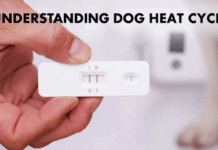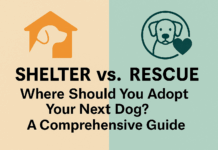Last Updated on December 6, 2023 by Dogs Vets
How to Protect Your Floors from Pet Damage
Our four-legged companions bring immeasurable joy to our lives, but they can also be tough on our homes — and especially our floors.
Whether you have a playful puppy, an active adult dog, or a senior cat, their claws, accidents, and exuberant antics can wreak havoc on your flooring.

However, with some smart choices and proactive measures, you can protect your floors from pet damage while still providing a comfortable and safe environment for your furry friends.
Selecting Pet-Friendly Flooring
Choosing the right flooring is the first step in protecting your floors from pet damage.
Not all flooring materials are created equal when it comes to withstanding the challenges pets present.
Here are some pet-friendly flooring options that can keep you and your furry friends happy:
Tile Flooring
Tile flooring is an excellent choice for pet owners due to its durability and resistance to scratches and stains. Porcelain and ceramic tiles, in particular, are tough and easy to clean. Additionally, tile is water-resistant, making it ideal for homes with pets prone to accidents.
Luxury Vinyl Flooring
Luxury vinyl flooring offers the look of hardwood or tile but is more resistant to scratches, moisture, and pet accidents. It’s comfortable for pets to walk on and easy to maintain, making it a practical choice for pet owners.
Laminate Flooring
Laminate flooring is budget-friendly and can mimic the appearance of hardwood. It’s less susceptible to scratches compared to hardwood but isn’t entirely scratch-proof. Nevertheless, it can be a reasonable option for homes with well-behaved pets.

Area Rugs and Runners
Area rugs and runners can be your best friends when it comes to protecting your floors from pet damage. They serve several purposes:
- Protect High-Traffic Areas: Place area rugs in high-traffic areas of your home, such as entryways and hallways. These are the places where your pet is most likely to track in dirt and cause wear and tear.
- Create a Cozy Space: Designate specific areas for your pets with cozy rugs or pet beds. This encourages your pets to stay in one spot, reducing their impact on the rest of your flooring.
- Catch Spills and Accidents: Rugs can catch spills and pet accidents, preventing them from seeping into your flooring. Choose rugs with stain-resistant properties for added protection.
Regular Nail Maintenance
One of the biggest threats to your floors is your pet’s nails. Regular nail maintenance is essential to prevent scratches and gouges. Here are some tips:
- Trim Nails: Keep your pet’s nails well-trimmed to reduce the risk of scratching. If you’re not comfortable doing this yourself, consider taking your pet to a professional groomer or veterinarian.
- Nail Caps: Nail caps, which can be applied to your pet’s claws, are an effective way to prevent scratching. They are soft and won’t damage your floors.
- Floor Protectors: Use nail caps or adhesive felt protectors on the bottom of your pet’s paws. These can provide an extra layer of protection against scratches.
Pet Gates
If you want to restrict your pet’s access to certain areas of your home, consider using pet gates. These are especially helpful if you have rooms with delicate flooring, expensive rugs, or valuable furniture.
Pet gates help maintain a pet-friendly environment while protecting specific spaces from potential damage.
Clean Accidents Promptly
Accidents happen, especially with puppies or senior pets. When your pet has an accident on the floor, it’s crucial to clean it up promptly. Urine, in particular, can damage some flooring materials if left untreated. Use pet-friendly cleaning products and follow these steps:
- Blot, Don’t Rub: Gently blot the stain with a clean cloth or paper towel to absorb as much liquid as possible.
- Clean with Appropriate Products: Use a pet-specific enzymatic cleaner to thoroughly remove the odor and stain. Avoid ammonia-based cleaners, as they can smell like urine to pets and encourage re-marking.
- Rinse and Dry: Rinse the affected area with water and pat it dry. Make sure there’s no lingering odor, as pets may be inclined to return to the same spot if they can still detect the scent.
It’s All About Compromise
Protecting your floors from pet damage doesn’t mean you have to compromise on style or comfort.
By choosing pet-friendly flooring options like tile, luxury vinyl, or laminate, using area rugs strategically, maintaining your pet’s nails, and implementing pet gates, you can create a safe and inviting environment for your pets while keeping your floors in top shape.
Remember that the key to a harmonious pet-friendly home is a balance between prevention and quick action. With the right flooring and these proactive measures, you can enjoy a beautiful and damage-free home while cherishing the company of your beloved pets.
Fact Check
We strive to provide the latest valuable information for pet lovers with accuracy and fairness. If you would like to add to this post or advertise with us, don’t hesitate to reach us. If you see something that doesn’t look right, contact us!

















